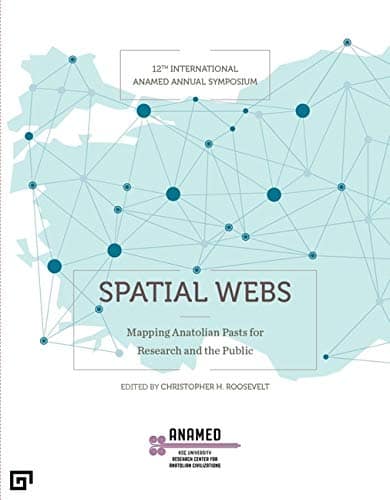221 pp, color figures, in English.
Spatial Webs charts the cultural heritage and identity of Anatolia, focusing on projects that incorporate Geographic Information Systems and other analytical tools in spatially significant research into the past. An important new contribution to archaeology and cultural heritage research, the volume brings together multidisciplinary researchers engaged in creating and using spatialized data resources for interactive web-mapping applications. The topics explored include sociospatial differentiation in bostancibasi registers, identity mapping the Jewish communities of medieval Anatolia, and the Turkey Cultural Heritage Map of the Hrant Dink Foundation
Preface
Abbreviations
- Mapping and Annotating the Past Mapping Anatolian Pasts for Research and the Public (Christopher H. Roosevelt)
- What Would Indy Do? Resisting Post-Truth through the Practice of Annotation (Elton Barker)
- Intra-Site GIS at Çatalhöyük (2009–2017): from an Integrative and Reflexive Tool to the Living Archive (Camilla Mazzucato, Claudia Engel, and Dominik Lukas)
- Spatializing the Sagalassos Integrated Information System (Anuja Dangol, Piraye Hacıgüzeller, and Jeroen Poblome)
- Mapping and Analyzing the Pergamon Micro-Region: An Example of Reproducible Research (Daniel Knitter and Bernhard Ludwig)
- The OpenOttoman Initiative and the Challenge of Building an Ottoman Gazetteer (Michael Polczynski and Amy Singer)
- A Preliminary Attempt to Construct a Geospatial, Multimodal Ottoman Transport Network for 1899 (M. Erdem Kabadayı, Piet Gerrits, Osman Özkan, and Turgay Koçak)
- The Shoreline of Early-Modern Istanbul: An Exploratory Study of Socio-Spatial Differentiation in Bostancıbaşı (Chief Gardener) Registers (H. Murat Gu¨venc¸ and Ayşe Nur Akdal)
- Mapping Cultural Heritage and Identity Mapping the Jewish Communities of Medieval Anatolia (Nicholas de Lange)
- The Turkey Cultural Heritage Map of the Hrant Dink Foundation (Vahakn Keshishian)
- Contributors
- Index




